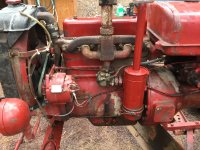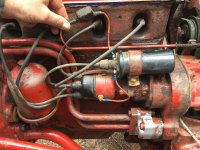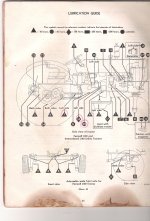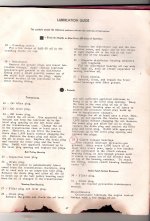jeffgreef
Silver Member
- Joined
- Jul 20, 2009
- Messages
- 189
- Location
- Plumas County, California
- Tractor
- Farmall, Gibson, Windolph, Simar, Bear Cat, Vaughan, Howard
I just discovered that my 1950 Super A does not have a magneto- battery ignition was an option offered by Int. at this time.
Still haven't figured out what I need to do to do a proper 12 volt conversion- appreciate it if someone can give me a rundown on the basics. I'll probably do a rewire too.
Photo shows the dist. and coil, and a mystery box wrapped in tape coming off the coil. What is that little box?
A 6 volt alternator was connected to the unit some time ago.
thanks for your time. I hope all these questions I'm asking are instructive for other Super A owners.
Edit- also- what is that little screw on the distributor mount, 2 inches below the center of the coil? Is this a lube point?
Still haven't figured out what I need to do to do a proper 12 volt conversion- appreciate it if someone can give me a rundown on the basics. I'll probably do a rewire too.
Photo shows the dist. and coil, and a mystery box wrapped in tape coming off the coil. What is that little box?
A 6 volt alternator was connected to the unit some time ago.
thanks for your time. I hope all these questions I'm asking are instructive for other Super A owners.
Edit- also- what is that little screw on the distributor mount, 2 inches below the center of the coil? Is this a lube point?



